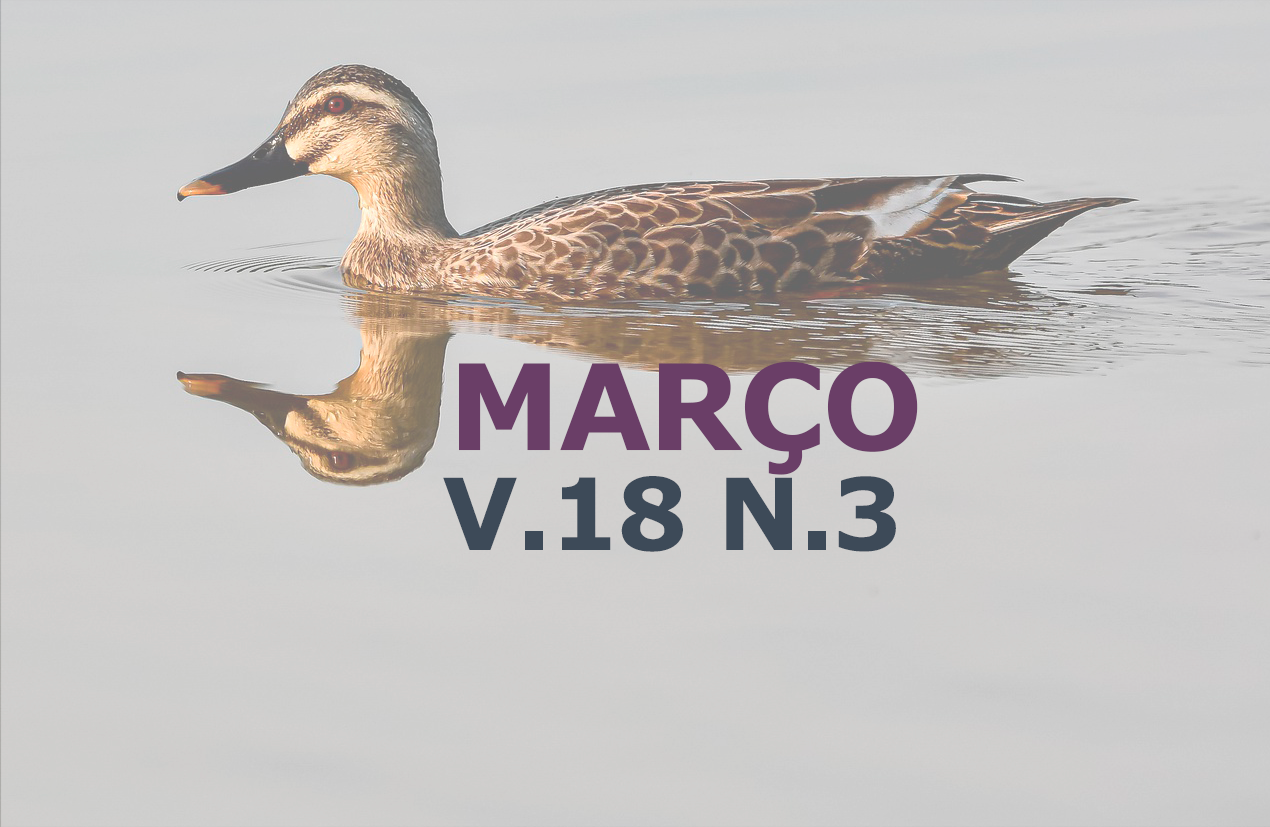Mycoplasma sp. in Guinea Pigs (Cavia porcellus)
Cases
DOI:
https://doi.org/10.31533/pubvet.v18n03e1557Keywords:
Bacteria, infections, mycoplasmosis, tilmicosinAbstract
The objective of this work was to report clinical cases of Mycoplasma sp. in four Guinea Pigs (Cavia porcellus). Mycoplasma is a bacterium from the Mollicutes class that causes infections of relevance in veterinary medicine, having already been observed in several species of animals. In the present case, the main complaint brought up was related to panting and sneezing by the four animals reported. During anamnesis, it was also reported that the patients’ parents had already been tested positive for Mycoplasma sp. Upon physical examination, lung auscultation was noted with wheezing, tachypnea, and lethargy. They were sent to a hospital to stabilize their condition, where antibiotics (orally and inhaled) and local steroid anti-inflammatory drugs (inhaled) were administered. Qualitative PCR (Polymerase Chain Reaction) was performed for Mycoplasma sp., using a stool sample, in an attempt to make a diagnosis. After improving their condition, the patients were discharged to continue treatment at home. A return visit was made after 5 days for reevaluation, the animals were stable and the lungs were clear upon auscultation. The PCR confirmed the suspicion of mycoplasma, with all patients testing positive. After the diagnosis was made, a monthly protocol was carried out with Pulmotil ™ AC (tilmicosin) (10 mg/kg/SID/ 5 days/monthly/drinking water). After starting the protocol, patients improved, returning to the hospital only for follow-up appointments. The monthly use of Pulmotil™️ AC (tilmicosin) proved effective in reducing clinical signs caused by Mycoplasma sp. in the reported case, and the animals no longer presented the symptomatic form of the disease.
References
Abu-Basha, E. A., Idkaidek, N. M., & Al-Shunnaq, A. F. (2007). Pharmacokinetics of tilmicosin (Provitil powder and Pulmotil liquid AC) oral formulations in chickens. Veterinary Research Communications, 31, 477–485. https://doi.org/10.1007/s11259-006-3543-6.
Beaufrère, H., Summa, N., & Le, K. (2016). Current therapy in exotic pet practice. In M. Mitchell & T. N. Tully (Eds.), Current therapy in exotic pet practice (pp. 76–151). Elsevier Health Sciences.
Burton, A., Kizhner, O., Brown, M. B., & Peltier, M. R. (2012). Effect of experimental genital mycoplasmosis on gene expression in the fetal brain. Journal of Reproductive Immunology, 93(1), 9–16. https://doi.org/10.1038/tp.2012.24.
Carpenter, J. W., & Marion, C. (2017). Exotic animal formulary-E-Book. Elsevier Health Sciences.
Cubas, Z. S., Silva, J. C. R., & Catão-Dias, J. L. (2014). Tratado de animais selvagens: Medicina veterinária. Roca, São Paulo.
Dutton, M. (2020). Selected veterinary concerns of geriatric rats, mice, hamsters, and gerbils. Veterinary Clinics: Exotic Animal Practice, 23(3), 525–548. https://doi.org/10.1016/j.cvex.2020.04.001.
Gautier-Bouchardon, A. V. (2018). Antimicrobial resistance in Mycoplasma spp. Microbiology Spectrum, 6(4), 4–6. https://doi.org/10.1128/microbiolspec.arba-0030-2018.
Graham, J. E., & Schoeb, T. R. (2011). Mycoplasma pulmonis in rats. Journal of Exotic Pet Medicine, 20(4), 270–276. https://doi.org/10.1053/j.jepm.2011.07.004.
Groebel, K., Hoelzle, K., Wittenbrink, M., Ziegler, U., & Hoelzle, L. (2009). Mycoplasma suis invades porcine. Infection and Immunity, 77(2), 576–584. http://dx.doi.org/10.1128/iai.00773-08.
Hill, A. (1971). Mycoplasma caviae, a new species. Microbiology, 65(1), 109–113. http://dx.doi.org/10.1099/00221287-65-1-109
Liu, W., Fang, L., Li, M., Li, S., Guo, S., Luo, R., Feng, Z., Li, B., Zhou, Z., & Shao, G. (2012). Comparative genomics of Mycoplasma: analysis of conserved essential genes and diversity of the pan-genome. PLoS One, 7(4), e35698. https://doi.org/10.1371/journal.pone.0035698.
Lopes, B. A. E. A. J., Pereira, D. C., Figueiredo, D. S., & Lima, M. C. (2021). Mycoplasma hyopneumoniae em suínos: Revisão. PUBVET, 15(10), 1–9. https://doi.org/10.31533/pubvet.v15n10a932.1-9.
Motta, M. C., Sartorelli, J. F., Spinelli, M. O., Junqueira, M. S., Cruz, R. J., Ferreira, F. M., Silva, S. V. B., Iannuzzi, L., & Bortolatto, J. (2011). Detecção de Mycoplasma pulmonis no trato respiratório superior em roedores através da técnica de PCR. Revista da Sociedade Brasileira de Ciência Em Animais de Laboratório, 1(1), 87–91. http://dx.doi.org/10.11606/d.10.2005.tde-30102006-124229
Quinn, P. J. (1994). Clinical veterinary microbiology (Issue SF 780.2. C54 1994).
Quinn, P. J., Markey, B. K., Leonard, F. C., Fitzpatrick, E. S., & Fanning, S. (2018). Microbiologia veterinária essencial. Artmed Editora.
Ramadan, N., Farran, M. T., Kaouk, Z., & Shaib, H. (2019). Impact of dietary methionine on respiratory tissue integrity and humoral immunity of broilers challenged with Mycoplasma gallisepticum and treated with Pulmotil AC®. Journal of Applied Animal Research, 47(1), 552–559. https://doi.org/10.1080/09712119.2019.1674659.
Richtzenhain, L. J., Soares, R. M., & Prudencio, C. R. (2014). Técnicas sorológicas e de biologia molecular. In Z. S. Cubas, J. C. R. Silva, & J. L. Catão-Dias (Eds.), Tratado de animais selvagens: Medicina veterinária (pp. 1634–1646). Roca, São Paulo.
Spinosa, H. S. S., Górniak, S. L., & Bernardi, M. M. (2017). Farmacologia aplicada à medicina veterinária. Koogan Guanabara.
Strait, E. L., & Madsen, M. E. (2016). Mollicutes. In D. S. McVey, M. Kennedy, & M. M. Chengappa (Eds.), Microbiologia veterinaria (pp. 427–440). Guanabara Koogan S.A.
Thacker, E. L. (2004). Diagnosis of Mycoplasma hyopneumoniae. Animal Health Research Reviews, 5(2), 317–320. http://dx.doi.org/10.1079/ahr200491
Tortora, G. J., Berdell, R. F., & Christine, L. C. (2017). Microbiologia. Artmed.
Trabulsi, L. R., & Alterthum, F. (2005). Microbiologia. In Microbiologia (p. 718). Atheneu Editora.
Walker, R. L. (2003). Mollicutes. In D. C. Hirsh, Y. C. Zee, & A. S. Coutinho (Eds.), Microbiologia Veterinária (pp. 155–162). Guanabara Koogan.
Downloads
Published
Issue
Section
License
Copyright (c) 2024 Bianca Ferreira Macrini Reis, Marcello Antunes, Alexandre de Pina, Felipe Bath

This work is licensed under a Creative Commons Attribution 4.0 International License.
Você tem o direito de:
Compartilhar — copiar e redistribuir o material em qualquer suporte ou formato
Adaptar — remixar, transformar, e criar a partir do material para qualquer fim, mesmo que comercial.
O licenciante não pode revogar estes direitos desde que você respeite os termos da licença. De acordo com os termos seguintes:
Atribuição
— Você deve dar o crédito apropriado, prover um link para a licença e indicar se mudanças foram feitas. Você deve fazê-lo em qualquer circunstância razoável, mas de nenhuma maneira que sugira que o licenciante apoia você ou o seu uso. Sem restrições adicionais
— Você não pode aplicar termos jurídicos ou medidas de caráter tecnológico que restrinjam legalmente outros de fazerem algo que a licença permita.





